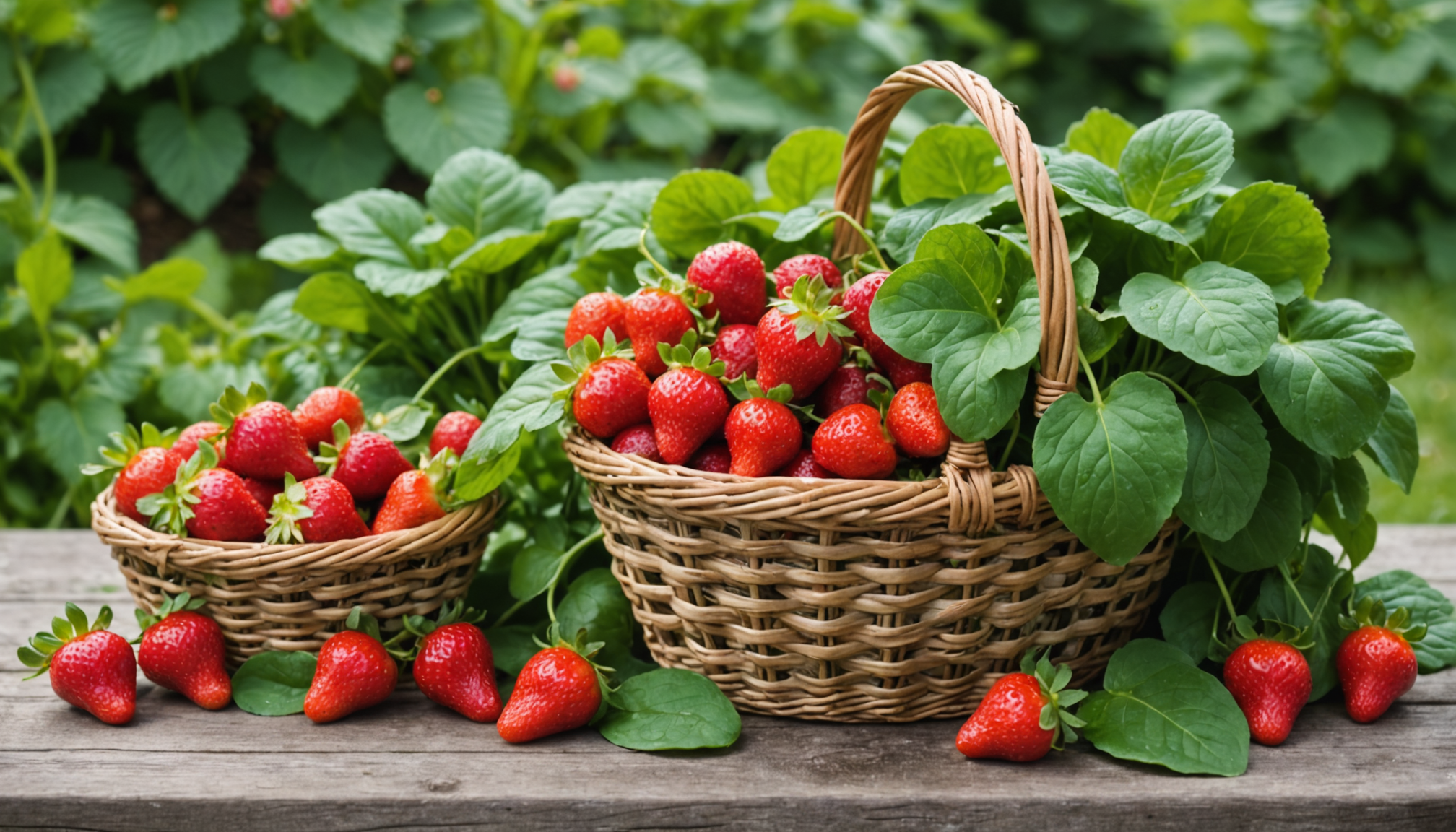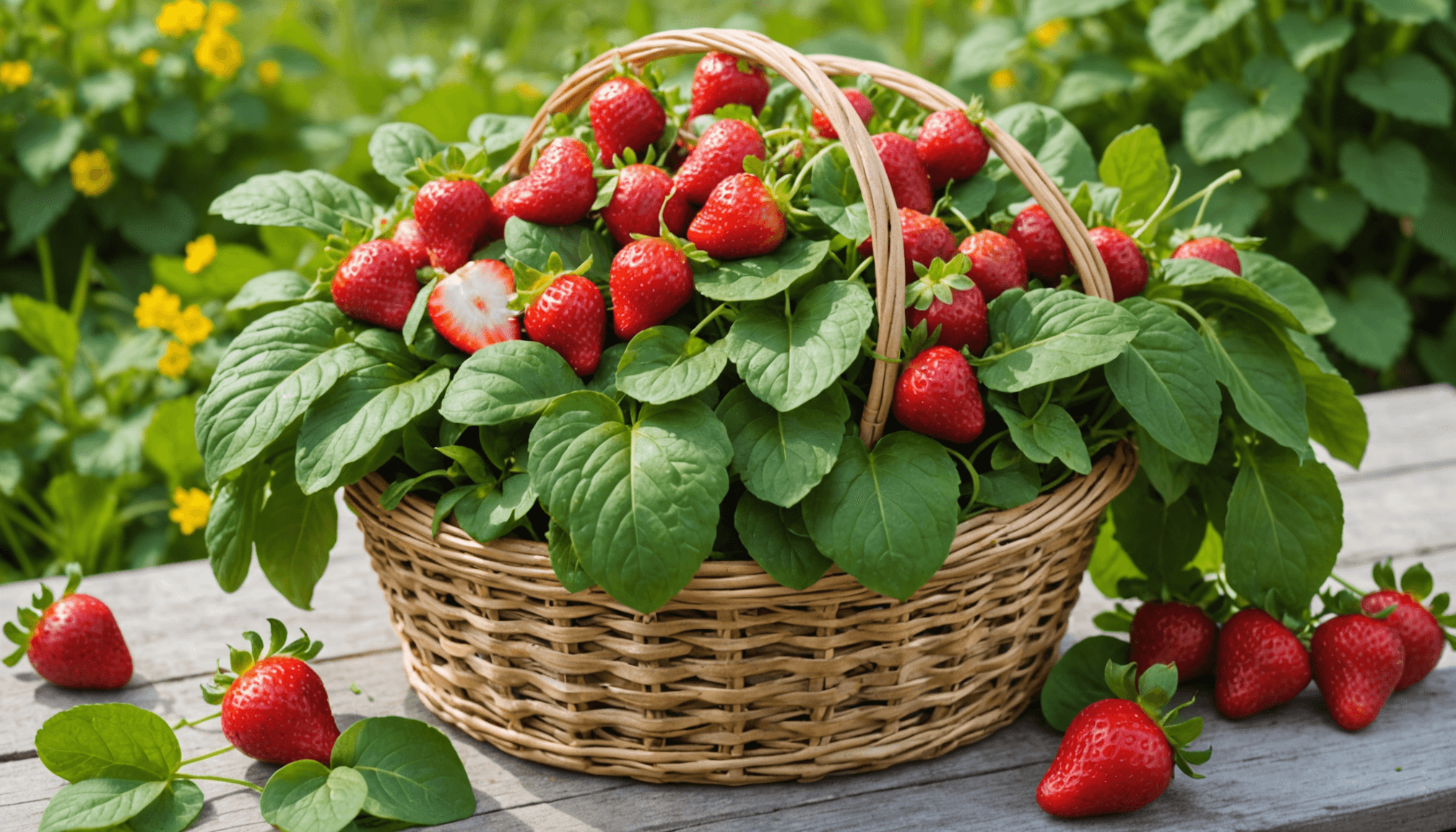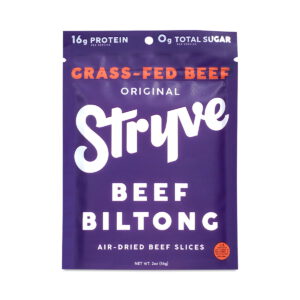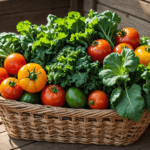- Understanding organic labeling
- Benefits of choosing organic products
- Seasonal organic produce guide
- Budget-friendly organic shopping tips
- Local vs. national organic brands
- Sustainable shopping practices
When navigating the world of grocery shopping, understanding organic labeling is essential for making informed choices. The term “organic” can vary in meaning depending on where products are sourced, and navigating these labels can feel daunting. However, grasping the key terms and symbols enables families, fitness enthusiasts, and budget-conscious consumers to select the best products for their needs.
Look for USDA Organic certification on products. This label guarantees that at least 95% of the ingredients are organic. It’s a straightforward stamp of approval that can help you identify genuinely organic items. Products labeled as “Made with Organic Ingredients” must contain at least 70% organic components, but they can’t display the USDA Organic seal.
Be cautious with the labeling terms “natural” and “healthy.” These terms are not regulated in the same way as organic and can often be misleading. They may imply that a product is free of artificial flavors or colors, but they do not necessarily indicate organic farming practices.
Additionally, check for the presence of the Non-GMO Project Verified seal. While not all organic products are tested for GMOs, this label helps ensure that the product you are purchasing is free from genetically modified organisms, which is an important consideration for many consumers today.
When shopping online, ensure that the retailer is reputable. Look for clear policies regarding product sourcing, especially for organic items. Reviews and ratings can provide insight into the experiences of previous customers, which is invaluable when selecting a vendor. Pay attention to the return policy, too; it should be flexible enough to allow for returns if the products do not meet your expectations.
For those looking to save while supporting local economies, consider joining a Community Supported Agriculture (CSA) program. This option allows families to receive fresh, seasonal organic produce directly from local farmers, often at a lower price than traditional grocery stores. Not only does it support local agriculture, but it also reduces the carbon footprint associated with transporting goods over long distances.
Keep an eye on seasonal organic produce, as these items are typically more affordable and tastier. Farmers’ markets often provide a plethora of organic choices—with the added benefit of knowing you’re supporting local growers.
Finally, whether shopping in-store or online, educate yourself about the safety of important organic ingredients. Familiarize yourself with the most commonly contaminated produce, often referred to as the “Dirty Dozen,” which includes fruits and vegetables known to have higher pesticide residues. Prioritizing organic purchases for these items can significantly reduce your exposure to harmful chemicals.
Integrating these shopping strategies can help cultivate a healthy, budget-friendly, and environmentally sustainable pantry filled with wholesome organic foods. By understanding organic labeling and using reliable shopping practices, you empower your family to make better food choices that support both personal health and the health of the planet.
Benefits of choosing organic products
Choosing organic products offers numerous advantages that go beyond simply avoiding pesticides and synthetic fertilizers. The benefits associated with organic foods can significantly impact personal health, environmental sustainability, and even social responsibility.
One of the most notable health benefits of consuming organic products is the reduced exposure to harmful chemicals. Organic farming practices prioritize natural methods and substances, which means that organic fruits, vegetables, and grains typically contain fewer pesticide residues compared to their conventional counterparts. There is growing research suggesting that a diet rich in organic foods may contribute to better overall health, including lower risks of certain diseases. For instance, some studies have indicated potential links between organic diets and reduced incidences of obesity, allergies, and atopic diseases in children.
Furthermore, organic products are often touted for their superior flavor and freshness. Many consumers report that organic fruits and vegetables taste noticeably better, likely due to the farming techniques that focus on soil health and biodiversity. This attention to quality can enhance meal enjoyment and encourage healthier eating habits.
To illustrate the differences between organic and conventional foods, consider the following table:
| Aspect | Organic Products | Conventional Products |
|---|---|---|
| Pesticide Exposure | Lower levels, fewer residues | Higher levels, more residues |
| Nutritional Content | Potentially higher in antioxidants | Standard nutritional values |
| Soil Health | Prioritized through crop rotation and natural composting | Often relies on synthetic fertilizers |
| Environmental Impact | Reduced chemical runoff and improved biodiversity | Higher chemical runoff and potential harm to ecosystems |
| Animal Welfare | Strict standards for humane treatment | Variable standards; may include factory farming |
In addition to these direct benefits, choosing organic can have a ripple effect on environmental sustainability. Organic farming methods strive to maintain ecological balance and biodiversity, often using less energy-intensive practices. This mindset not only leads to healthier soil but also contributes to the overall health of ecosystems, which is essential for maintaining the planet’s balance. Moreover, organic farming supports local economies, promoting small-scale farmers who often invest back into their communities.
There is also a growing social aspect to organic purchasing. By choosing organic products, consumers often prioritize ethical considerations such as humane treatment of animals and fair labor practices. Many organic brands set standards that promote social responsibility, ensuring that workers are treated fairly and that their practices are sustainable in the long term.
Ultimately, the decision to choose organic products often reflects a wider commitment to personal well-being, environmental stewardship, and social ethics. Understanding these benefits can empower consumers to make choices that align with their values and promote healthier lifestyles for themselves and future generations.
Seasonal organic produce guide

When it comes to selecting seasonal organic produce, timing is everything. Shopping for fruits and vegetables that are in season not only enhances their taste but also makes them more affordable and sustainable. Each season brings a diverse array of flavors and nutrients to your table, allowing for a rich variety in your family’s diet.
During spring, you can enjoy fresh greens like spinach and arugula, vibrant radishes, and the early sweetness of strawberries. These options are packed with vitamins A and C, and they thrive in the cooler temperatures and moisture of spring. Incorporate these greens into salads or smoothies for a nutritional boost, while the strawberries serve as a delicious topping for whole-grain pancakes.
As summer rolls in, keep an eye out for tomatoes, zucchini, peppers, and a colorful array of berries. Summer is the time for a vibrant plate! Tomatoes packed with lycopene and juicy peaches can be tossed into salads or used in salsas to elevate your meals. Plus, the abundance of fresh herbs during this season can turn even the simplest dishes into culinary delights.
When autumn arrives, it brings hearty vegetables like sweet potatoes, pumpkins, and Brussels sprouts—great choices for warming soups and roasts. These seasonal stars are not only deeply flavorful but also provide important nutrients, including fiber and potassium, which are beneficial for overall health. Look for organic varieties to ensure that you’re avoiding chemicals while supporting your local farmers.
In the cold months of winter, hearty greens like kale and collard greens shine, along with root vegetables like carrots and beets. These ingredients can be perfect for stews or stir-fries and are known for their long storage life. Incorporating these foods into your diet can help maintain your immune system during the winter months—essential for your family’s health.
To maximize your grocery shopping experience, consider these practical tips for both local and online shopping:
- Visit local farmers’ markets: They often showcase seasonal produce, allowing you to buy fresh and support local growers simultaneously.
- Join a CSA: Community Supported Agriculture programs allow you to receive a variety of seasonal organic produce directly from local farms, often at a reduced price.
- Check availability online: Many grocery delivery services allow you to filter by local and seasonal options. This features organic produce that aligns with your plan.
- Plan your meals around seasonal offerings: This not only keeps your grocery expenses down but also expands your culinary repertoire and encourages familial exploration of new flavors.
Always remember to look for the freshest options available, as seasonal produce is not only more flavorful but also retains higher nutrient values. When shopping, be mindful of how to store fresh produce properly to prolong its life, such as keeping greens wrapped and placed in your refrigerator’s crisper drawer. Additionally, avoid pre-cut fruit and vegetable options; they are often more expensive and may not be as fresh as whole produce.
Whether you’re navigating the aisles of your local grocery store or browsing online, honing these shopping skills will enhance your family’s meals and ensure you are making both healthy and economical choices. Keep updated on local produce availability and organic offers to make the most of your seasonal selections!
Budget-friendly organic shopping tips
Shopping for organic products doesn’t have to break the bank. With a bit of planning and strategic thinking, you can incorporate organic foods into your diet without overspending. Here are some practical ways to keep your grocery bills manageable while still opting for organic selections.
One effective way to save money is to buy in bulk. Many stores offer discounts on organic products when purchased in larger quantities. Items such as grains, nuts, seeds, and dried fruits often have a lower per-unit price when bought in bulk. If you have the storage space, consider investing in bulk organic foods to take advantage of these savings.
Planning your meals around sales and seasonal items is another great strategy. Keep an eye on store flyers for weekly sales on organic products. Create your weekly menu based on what’s on sale, reducing your overall grocery expenses while ensuring you enjoy fresh, organic meals. Seasonal produce is often less expensive and at its peak flavor, making it an economical choice that’s also health-conscious.
Consider substituting some of your favorite organic products with store brands. Many grocery stores now offer their own line of organic products, which can be significantly cheaper than national brands. These products are often of comparable quality, so it’s worth trying them out.
Another savvy shopping tip is to take advantage of coupons and loyalty programs offered by organic brands. Sign up for newsletters from your favorite organic brands or local grocery stores to receive exclusive discounts and offers.
Joining a Community Supported Agriculture (CSA) program allows you to receive a weekly box of fresh organic produce at a lower cost than traditional grocery stores. Not only does this support local farmers, but it also encourages you to cook with whatever is in season, reducing waste and maximizing the benefits of fresh organic foods.
“The best way to save on organic groceries is to know your sources and develop a plan that works for your lifestyle.”
Lastly, don’t forget to reduce food waste to help manage your organic shopping budget. By tracking the groceries you have and planning meals accordingly, you can avoid buying more than you need. Using leftovers creatively can also extend the value of your organic purchases. A little creativity goes a long way in ensuring that every bit of food you buy is utilized.
By implementing these budget-friendly strategies, you can enjoy the many health benefits of organic foods without overspending, making it a sustainable choice for you and your family.
Local vs. national organic brands
 Local organic brands often take pride in their community roots, emphasizing freshness and environmental stewardship. Their appeal lies not only in the quality of their products but also in the relationships they cultivate with local consumers and farmers. When you purchase local, you’re contributing to the local economy, creating jobs, and supporting agricultural diversity. These brands frequently sell their goods directly, whether at farmers’ markets, through farm stands, or via Community Supported Agriculture (CSA) programs, which can foster a transparent connection between consumers and producers.
Local organic brands often take pride in their community roots, emphasizing freshness and environmental stewardship. Their appeal lies not only in the quality of their products but also in the relationships they cultivate with local consumers and farmers. When you purchase local, you’re contributing to the local economy, creating jobs, and supporting agricultural diversity. These brands frequently sell their goods directly, whether at farmers’ markets, through farm stands, or via Community Supported Agriculture (CSA) programs, which can foster a transparent connection between consumers and producers.
On the other hand, national organic brands have the ability to scale up production which can lead to lower prices and more availability in grocery stores across the country. With wider reach, these brands often have the resources to innovate and create organically-certified products that may not otherwise be available in smaller markets. While their products tend to be consistent and highly regulated, there’s sometimes a disconnect from the farming practices and local agriculture that consumers might desire.
When deciding between local and national options, consider aspects like freshness, price, and the ecological footprint of each option. Local products may offer superior flavor and nutritional value, as they are often harvested at peak ripeness and require less transportation. Conversely, national brands might provide convenience and variety, particularly for items not readily available in your region.
Engaging with both local and national organic brands can create a balanced approach to grocery shopping. You might choose to source staple items from national brands for convenience, while opting for local produce when in season or to support your community. This dual approach allows you to enjoy the preserve quality of local offerings while benefiting from the convenience and variety national brands provide.
As you navigate the choices available in grocery stores, consider how each option aligns with your values regarding sustainability, health, and community support. Your shopping decisions can contribute to a larger impact on the environment and local economies, encouraging a more responsible approach to food consumption.
- What are the main differences between local and national organic brands?
- Local organic brands often focus on freshness, community support, and seasonal availability, while national brands benefit from larger-scale production and distribution, which can lead to lower prices and greater variety.
- How can I find local organic brands in my area?
- Check your local farmers’ markets, farm stands, and online directories that focus on supporting local produce. Community Supported Agriculture (CSA) programs are also a great way to access local organic products directly from farmers.
- Are local organic products fresher than national brands?
- Generally, local organic products are fresher because they are harvested at peak ripeness and require less transportation. This often enhances their flavor and nutritional value.
- Can I save money buying local organic products?
- Buying local can sometimes be more affordable, especially when purchasing directly from farmers or participating in CSAs, which often provide seasonal produce at lower costs compared to supermarkets.
- How do I determine if a national organic brand is trustworthy?
- Look for third-party certifications such as the USDA Organic label. Researching the brand’s practices and values, including their commitment to sustainability and social responsibility, can also provide insight into their trustworthiness.
- Is it better to buy only local organic products?
- While buying local supports community agriculture and sustainability, a mix of local and national products can give you the best of both worlds—quality and convenience—allowing for more diverse meal planning.
- What should I be mindful of when choosing between local and national organic brands?
- Consider factors such as freshness, flavor, sustainability practices, cost, and your support for local economies when making your choices. Each option has unique benefits that can align with your values and needs.
Sustainable shopping practices
Sustainable shopping practices are essential for anyone looking to make mindful choices that benefit both their health and the environment. Whether grocery shopping online or in-store, there are several effective strategies to ensure that the products you purchase align with sustainable values.
Start by focusing on whole, minimally processed foods. These items generally have a lower environmental footprint compared to highly processed foods, which often come packaged in single-use plastics. Opt for bulk bins for grains, nuts, and seeds to reduce packaging waste. Bring your own reusable containers to fill with these products, further minimizing your impact on the environment.
Incorporate a variety of plant-based foods into your shopping list, as plant-based diets tend to be more sustainable than those heavily reliant on animal products. This shift not only benefits personal health but also contributes to reduced greenhouse gas emissions associated with livestock farming. Experiment with legumes, whole grains, and seasonal vegetables to create nutritious, vegan meals. For instance, legumes like lentils and chickpeas can serve as excellent protein sources in your diet.
Whenever possible, choose organic products. Organic farming practices prioritize ecological balance and reduce chemical runoff into water supplies. Seek out local organic farms or Farm-to-Table initiatives, as these often have smaller carbon footprints and are fresher than national brands. Shopping directly from local farmers not only fosters community relationships but also supports sustainable agricultural practices.
When shopping online, be aware of packaging and shipping policies. Opt for retailers committed to eco-friendly packaging solutions, such as minimal or compostable materials. Check if they consolidate shipments to cut down on emissions from transportation. Researching companies before purchasing can reveal their sustainability practices and commitment to environmental responsibility.
Another sustainable practice involves being mindful of your purchase quantities to reduce food waste. Focus on meal planning and create a shopping list that reflects intended meals. This will help avoid buying unnecessary items that may go bad before they can be used. Embrace leftover creativity by finding new recipes that utilize leftover ingredients, reducing waste while fostering culinary exploration.
Lastly, consider seasonal shopping as a sustainable practice. Fruits and vegetables that are in season require fewer resources to grow and generally taste better. They are often less expensive than out-of-season alternatives that have traveled long distances. Check local farming calendars to learn what’s in season, or visit farmers’ markets where you can find out directly from growers what their latest harvest includes.
Engaging in sustainable shopping practices not only makes a significant difference for your immediate health but also contributes to a larger movement towards a more sustainable planet. By making conscious choices every time you shop, you can support healthier living for yourself and future generations.
New Customers Offer!
Free Gift for the new customer
$24 Value, When You Subscrib Visit Thrive Market












